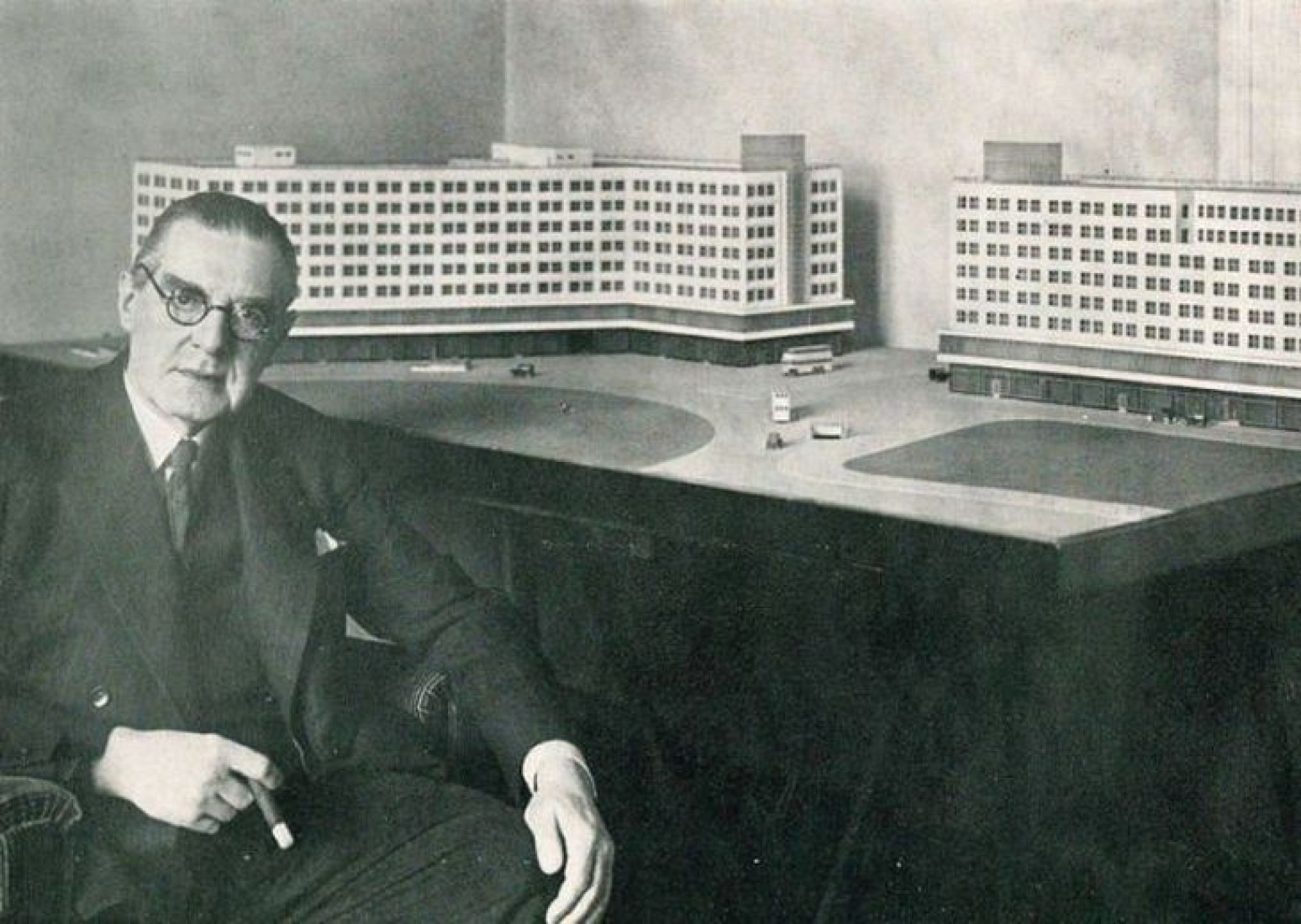Behrens was one of the most outstanding German architects; his discourse had so huge proportions that he became soon one of the first examples of the industrial architecture of his time. His studio was the benchmark for a entire generation of progressive architects as Walter Gropius, Aldolf Mayer and from Ludmig Mies van der Rohe to Le Corbusier.
Berolinahaus (Berlonia House) is the name of a high-rise building built between 1929 and 1932 at Alexanderplatz. Designed by architect Peter Behrens, the building is an extraordinary example of the classic modernity of the Neue Sachlichkeit’s style (New Objectivity), a German post-expressionist movement of the twenties.
In the 1920s, Alexanderplatz was alredy one crowed square, where the public transport stood out. By this time the overcrowding was a growing problem, so the city construction councillor decided to put the reconstruction plan out for tender. Hans and Wassili Luckhardt bothers were the winners. The investor of the project, who disagreed with the plans of the Luckhardt bothers, decided to give the plan to the winner of the second prize: Peter Behrens. The economics difficulties due to the emergent national-socialism in addition to the Great Depression stopped the project. Behrens planned to close the square with a group of buildings, but he only could make Alexanderhaus and Berolinahaus, that were completely built before the halt.
The construction of the buildings started in September of 1929, under hard conditions in a high density area. The Berolina House was one of the first German buildings planned as a visible reinforced concrete framework. For the laying of foundations, the subterranean waters had to be pumped during three years and a tough concrete housing of 1.20 metres thickness were placed into the sandy land. After a two years building period, the Berolinahaus opened the floodgates in January of 1932.
One of the first tenants of the building was the textile firm C&A that occupied the first and second floor. The damages caused by the Second World War were not serious, for this reason, the soviet headquarters were moved there. In 1952, the Berlin city council changed there and the administrative authorities later. At the beginning of the fifties the building was renovated, but the original Behren’s construction plan was not respected that is why just the grid of the concrete framework remained.
The authorities left the building in 1988 and it stayed empty for the following seven years. In 2004 the owner sold it to a state agency, which started immediately the renovation focused on recover the original appearance. The construction were carried out from 2005 to the 6th of September of 2006, by the architect Sergei Tchoban with a 25,5 million Euros cost.
The building
The Berolinahaus building is located at a rectangular square of 74 metres long and 22 metres wide. The eight-storeyed building has 30,3 metres height up to the terrace roof. It has two floors 8 metres under the street level, having access to the underground network. The façade is enslaved by square windows forming group of three in the south-transverse side and group of two in the sides. By dividing the window cases into four squares, whole the façade seems a symmetrical structural framework of holes. The northwest transversal façade of the building had originally no windows and was of use as a fire protection wall, nevertheless during the last renovation, a triangular glass large window, that stands out from the façade and expands across two storeys, was added. The building has a 16.500 square metres built area, of which 5.200 square metres are shopping area and about 7.000 square metres are available business space.
A vertical frosted glass light box rises up in a transversal way on the roof terrace, which stands out from the façade, and it presents itself on a level with the first floor and it extends throughout the structure. The entry hall of the building is coated with dark material as the external façade of the ground floor. The covering of the hall is made of polishing brass and the handrail of the stairs is working of precious metals. The floor is made of black granite. The basement is decorated with green-turquoise blue glazed pottery stones.

















































